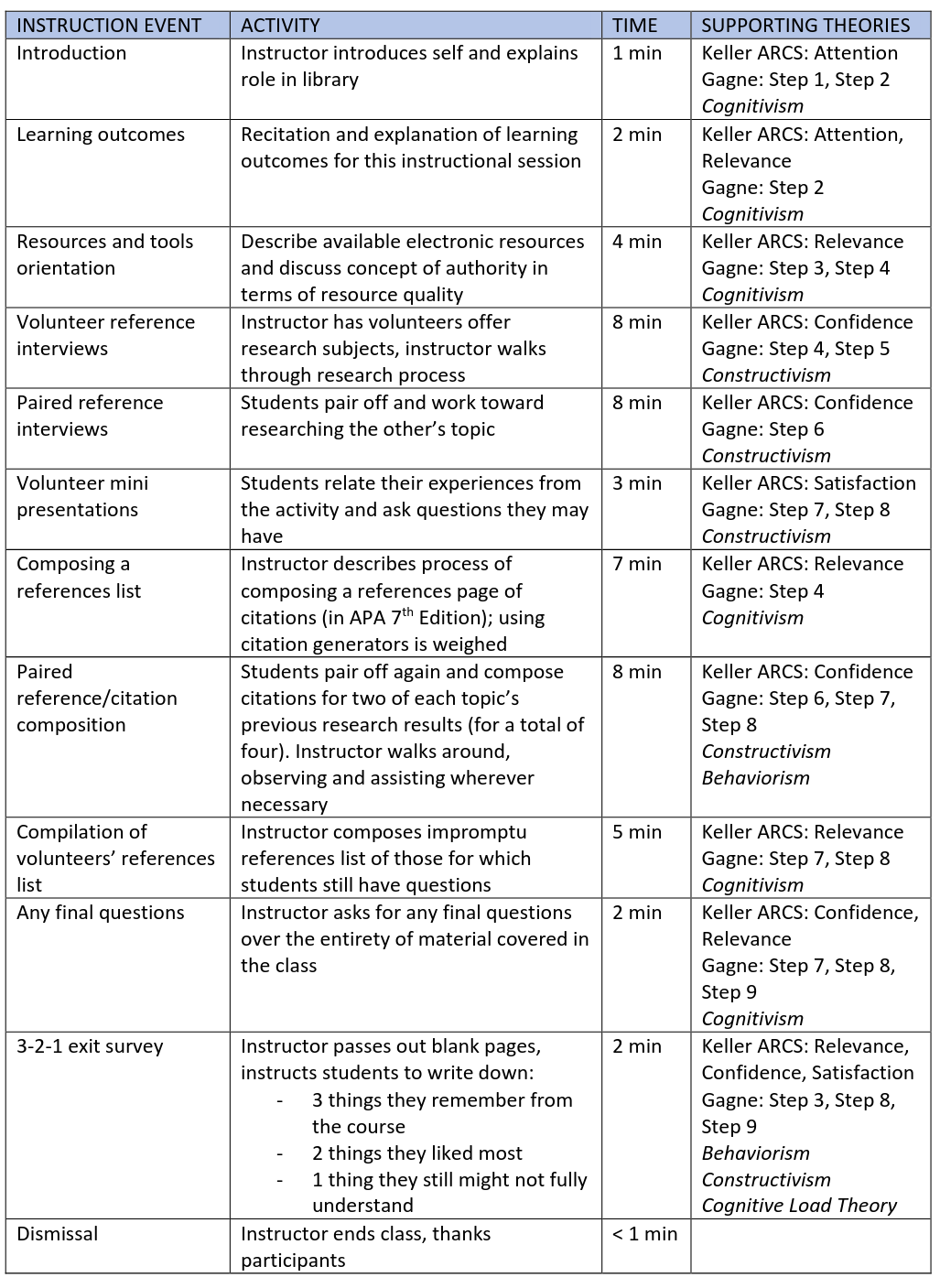Information Literacy Lesson Plan
Constructed for an Information Literacy and Library Resources Orientation “one-shot” course meant for an undergraduate sociology class. It was designed to assist students with a final research paper, so it also included instruction on composing citations and compiling a references list.
Session Description
This fifty - minute instructional session is intended to introduce and familiarize undergraduate sociology students with important library research services, tools, resources, methods, and best practices. Students in the sociology class are expected to complete a substantial final research paper complete with citations and reference list, so the information in this instructional session is of particular importance . The success and effectiveness of the session will depend largely on a few interactive components and activities, which it is hoped will cultivate class engagement. It is recommended that the instructor have the session observed by another instructional librarian for the purposes of evaluation and assessment.
Learning Outcomes
After the instructional session, participants will be able to:
- Articulate the important differences between various information formats and types (Information Creation as Process).
- Focus their research toward reputable and authoritative sources of information (Authority is Constructed and Contextual).
- Develop and implement a strategy for finding suitable resources for a research paper through the utilization of discovery tools, database and journal access, and other library resources (Searching as Strategic Exploration).
- Properly compose a list of references in APA 7 th Edition format (Information Has Value).
Materials
- Overhead video projector
- Instructor’s computer
- Computer lab/array
- Blank paper (24+ sheets)
- 24+ Printed copies of APA 7th Edition style guide (one-sheet quick reference)
Learning Activities
- Volunteer reference interviews
- Paired reference interviews
- Reference mini presentations
- Paired reference/citation composition
- 3-2-1 exit survey

Process Description
Instructor introduces self and explains their role in the library, followed by what it is hoped this course accomplishes (recitation of Learning Outcomes).
An introduction to available electronic resources opens the instructional session, with a short lecture on the distinction between database searches and accessing individual journals, as well as commentary on the value of academic, peer-reviewed scholarship.
This is followed by a one-on-one reference interview in front of the class, where a volunteer offers a potential research question and the instructor demonstrates the first few steps of a search for suitable resources. Then another volunteer gives the instructor a different topic and the instructor researches it, going a few steps further, adjusting different search parameters, and exploring a couple of alternate methods. This continues for a third or even a fourth iteration, after which it is believed that a familiarity with the processes and methods has taken root.
From this point the class will divide into pairs and repeat this process with each other individually--the research question is proposed by one student to the other, who then tries their hand at finding good resources for them. The roles are then reversed and the process is repeated.
The instructor then asks for volunteers to relate their group’s experiences and results to the rest of the class, remarking on any questions they may still have or nuances they noticed. During these mini presentations, the instructor should be asking questions and clarifying matters and concepts for the benefit of the class.
At this point the instructor will discuss the process of using citations and composing a references page (in APA 7 th Edition). The potential benefits (few) and common pitfalls (many) of using citation generators is covered and demonstrated.
Then students return to their paired groups and are instructed to work together to compose proper references for two of each topic’s search results (for a total of four). The instructor walks around the room and assists, checking on progress.
Then the instructor regains the attention of the class and takes questions. This is an opportunity for the instructor to go through the process of composing references in front of the class, doing the student-provided examples properly and compiling an impromptu reference list. The instructor asks the class one last time for any questions over any of the material covered during the instructional session.
The instructor then has the students complete a 3-2-1 exit survey, after which the students are thanked for their participation and the class concludes.
Tags: online-privacy, lesson-plan, information-literacy
← Back home